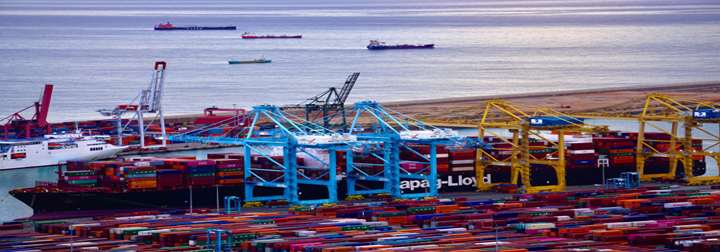The ocean freight industry is undergoing a massive transformation, as the technology and supply chain management tools are being improved by the day, impacting ocean freight rates. The rising demand for e-commerce, increasing scale of individual shippers and increased competition in ocean freight shipping are some of the key trends reshaping this industry.
1. Rising Demand For E-Commerce The global e-commerce market is expected to grow at a compound annual rate of 12% from 2020 to 2023, according to Gartner. This will lead to an increase in online orders across all types of products, including those that have traditionally been shipped by air or truck.
2. Increased in Efficiency Due to Digitization Advances in automation, digitization and a recent uptick in world trade are expected to drive efficiency and profits for ocean carriers in 2023.
In the past decade, automation has been a key trend reshaping the ocean freight market. The introduction of advanced technologies like artificial intelligence (AI) and machine learning is helping ships navigate faster, more accurately and with greater efficiency. This will help carriers improve their overall performance while also saving money on fuel costs.
Digitization is another important trend that will have a major impact on ocean carriers in 2023. Digitization means digitizing every aspect of an operation—including cargo handling processes such as loading and unloading cargo from vessels onto trucks or trains—and automating them so they can be completed quickly without human intervention. This helps reduce labor expenses by reducing repetitive tasks that require manual labor.
3. Developing New Technologies To be successful over the next five years carriers will need to adopt new technology quickly, create innovative operational models and provide greater value for their customers.
4. Reduction in Bunker Prices Shipments that once traveled via truck or rail will move by water vessels due to an increasing demand for lower shipping costs. The reduction in bunker prices has also helped drive down shipping costs. The current market is an indication that this trend will continue into 2023 as more companies begin using ocean freight to get their products from point A to B at a lower cost than ever before.
The future of logistics and transportation industries is bright and it can only get better from here.
Reference:
https://freightmango.com/blog/6-key-trends-reshaping-ocean-freight-industry-2023/
The floating traffic jams off ports. The multiplying costs of moving freight. The resulting shortages of goods. All of this had seemed like an unpleasant memory confined to the COVID-19 pandemic. But no such luck!
An ocean container capacity crunch has hit global trade just as peak shipping season starts, with freight spot rates up some 30% over the past few weeks and heading higher.
The first joint Europe-wide assessment of the drivers and impact of chemical pollution by the European Environment Agency (EEA) and the European Chemicals Agency (ECHA) has concluded that, despite progress in some areas, “more work is still needed to reduce the impact of harmful substances on human health and the environment”. Key findings include:
The severe drought which has forced the Panama Canal, one of the world’s busiest trade passages, to limit daily crossings could impact global supply chains during a period of high demand.
In the early hours of March 26, the Singapore-flagged ship Dali, loaded with 5,000 containers, slammed into Baltimore’s Francis Scott Key Bridge, causing the 1.6-mile (2.5-kilometer) bridge to collapse in a matter of seconds. The Dali was departing for Colombo when the disaster struck. Initial fears were confirmed that half a dozen people lost their lives in the accident.
The pharmaceutical and biotechnology industries constantly seek innovative methods to enhance product stability, solubility, bioavailability and ease of use. Within this realm, CDMOs [Contract Development & Manufacturing Organizations] serve as invaluable partners in the development and production of high-quality drug products.
Chinese New Year 2024 is upon us, disrupting logistics from Asia starting Feb 10th. This event is expected to impact global shipping until Feb 21. Freight rates from Asia has skyrocketed with rates to the US surging by 3.5X and Europe by 6X.
Amid ongoing Red Sea diversions by shipping giants like Maersk, CMA, logistics managers are globally confronting a dual challenge of escalating ocean and air freight prices alongside cargo disruptions due to
Why will CM be the next generation on quality?
